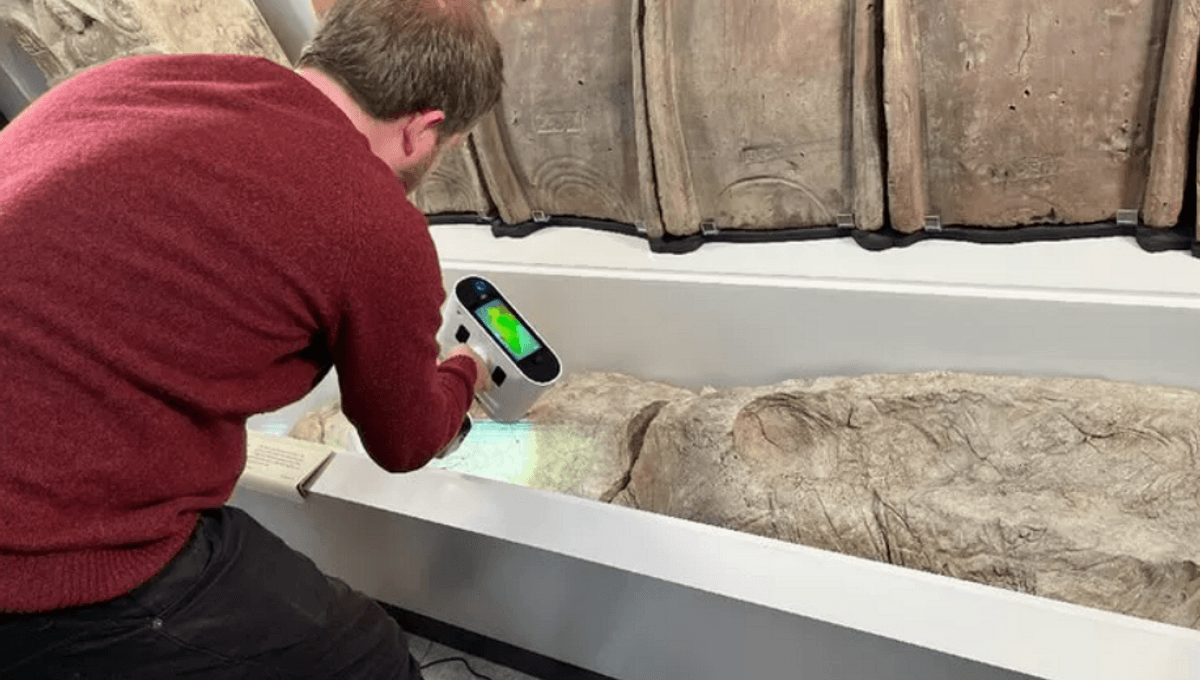
For the first time, archaeologists have used cutting-edge imaging techniques to understand the unusual Roman burial practice of pouring gypsum over the remains of loved ones. By delving into this mystery, the team stumbled across a “poignant family tragedy” they weren’t expecting.
In this obscure form of burial, a liquid form of gypsum – a mineral used to make the mysterious “Roman concrete” – is poured into the coffin, covering the deceased body and eventually hardening. This creates a negative cavity where the shape, size, and original position of the dead are perfectly preserved like a cast.
The researchers note that Roman gypsum burials have been found across Europe and North Africa, but they are particularly common in Roman Britain where at least 45 such burials have been documented.
In the new research, the team collected 3D scans of 16 gypsum burials that are held by the Yorkshire Museum in the UK. This kind of burial typically only contains a single person per coffin, but their scans revealed that one of the gypsum coffins contained a family of two adults and an infant who died at the same time.
“The 3D images allow us to witness a poignant family tragedy almost 2,000 years after it occurred, reminding us not only of the fragility of life in antiquity but also the care invested in the interment of this group of people,” Professor Maureen Carroll, chair of Roman archaeology at the University of York, said in a statement.
“The contours of the three individuals in the gypsum can be seen with the naked eye, but it is difficult to make out the relationship of the bodies to each other and to recognize how they were dressed or wrapped. The resulting 3D model clarifies these ambiguities in stunning fashion,” Professor Carroll added.
The team presented their findings at the York Festival of Ideas on June 3. In the next part of the research on the bodies, the team will use further analysis to determine their age, sex, diet, and even geographic origin.
Unfortunately, their work was not able to expose why the Romans occasionally opted for this type of burial, although it does appear to be associated with people from a high social status.
Even though its purpose is still obscured, this type of burial is extremely useful for archaeologists who can use the imprint of the figures to learn about aspects of the individual that would usually have been lost to time, such as their clothing.
As this latest project also highlights, they also make for great 3D images which show imprints of past lives like never before.
“These advanced scanning technologies have been game-changing. Researchers can better analyze archaeological material for details often not visible to the human eye, while the public can explore interactive digital versions of ancient objects in new, more engaging ways” said Patrick Gibbs, Head of Technology at Heritage360 who worked on the digital imaging.
“The potential for 3D scanning to offer us a unique window into the past is quickly being realised,” added Gibbs.
Source Link: Mystery Of Why Romans Poured Liquid Gypsum Over Bodies In Stone Coffins